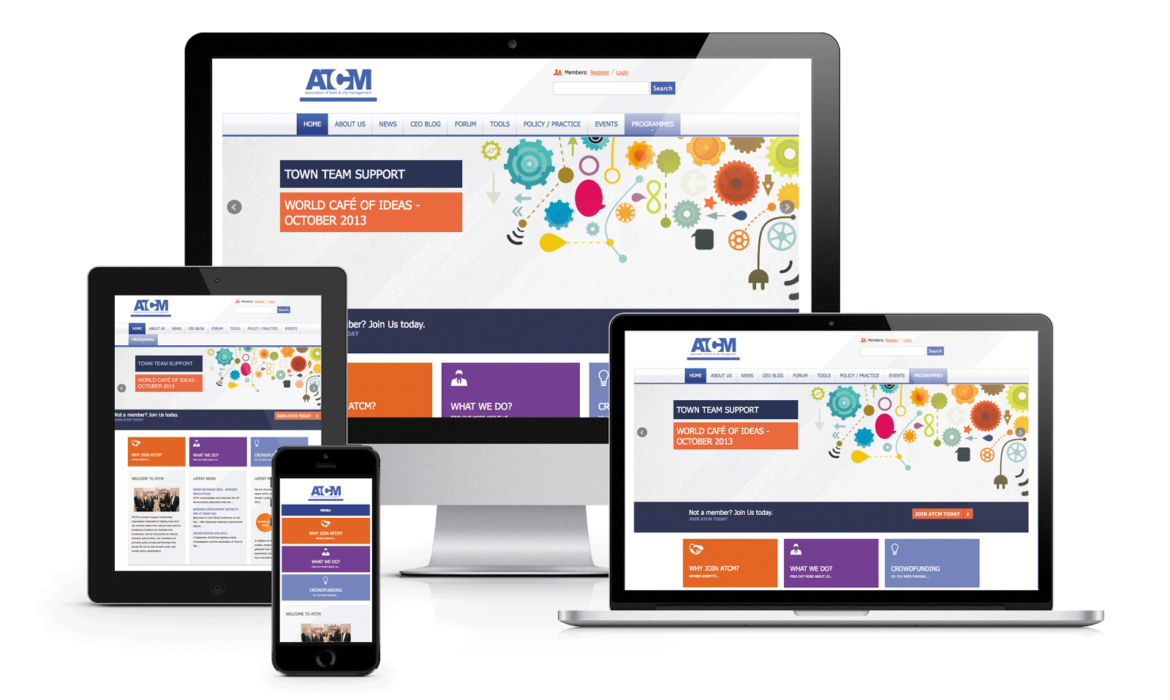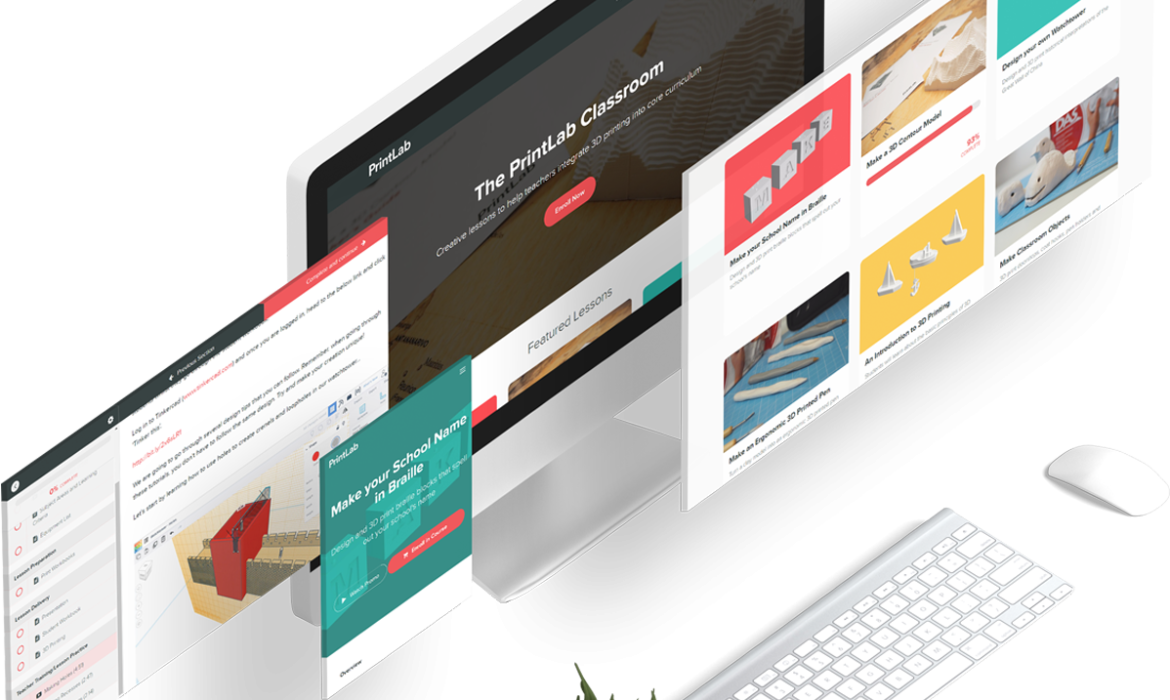Устранение неполадок и решение проблем при дизайне веб-сайта: подробное руководство
Введение
In the dynamic world of web development, websites are not static entities; they require ongoing maintenance and troubleshooting to ensure they continue to function optimally and deliver a seamless user experience. Whether it’s broken links, slow loading times, or unresponsive layouts, website issues can arise from various causes, disrupting user engagement and potentially damaging your brand reputation.
Common Website Problems and Their Solutions
Broken Links: Identify and fix broken links using tools like Google Search Console or broken link checkers.
Slow Loading Times: Optimize images, minify code, utilize caching mechanisms, and consider a content delivery network (CDN).
Unresponsive Layouts: Implement responsive design techniques using CSS media queries to adapt to different screen sizes.
Cross-Browser Compatibility Issues: Test your website across various browsers and use browser-specific prefixes when necessary.
Accessibility Concerns: Ensure your website adheres to accessibility guidelines to make it usable for all users.
Security Vulnerabilities: Keep your website’s software and plugins up to date, use strong passwords, and implement security measures.
A Systematic Approach to Website Troubleshooting
Identify the Problem: Clearly define the issue you’re facing, including when it started, what actions trigger it, and any error messages.
Gather Information: Collect relevant information, such as website logs, error reports, and user feedback.
Reproduce the Issue: Attempt to reproduce the problem on different devices and browsers to narrow down the cause.
Research and Analyze: Search for potential solutions online, consult documentation, and analyze relevant code.
Implement Solutions: Implement the identified solutions, testing thoroughly after each step.
Monitor and Document: Monitor the website for any recurring issues and document the troubleshooting process for future reference.
Essential Tools for Website Troubleshooting
Web Developer Tools: Utilize browser-based developer tools to inspect code, debug JavaScript, and analyze network requests.
Website Monitoring Tools: Employ website monitoring tools to track performance, uptime, and potential issues.
Error Reporting Tools: Implement error reporting tools to capture and log errors for further analysis.
Code Versioning Systems: Use code versioning systems like Git to track changes, revert to previous versions, and collaborate on fixes.
Preventive Measures for Minimizing Website Issues
Regular Updates: Keep your website’s software, plugins, and themes up to date to address security vulnerabilities and bug fixes.
Thorough Testing: Rigorously test new features, updates, and changes before deploying them to the live website.
Performance Optimization: Regularly optimize website performance by compressing images, minifying code, and leveraging caching mechanisms.
Security Audits: Conduct periodic security audits to identify and address potential vulnerabilities.
Monitoring and Maintenance: Regularly monitor website performance, logs, and user feedback to proactively identify potential issues.
Заключение
Website design troubleshooting and problem-solving are essential skills for any web developer or website owner. By mastering these techniques, you can effectively identify, diagnose, and resolve website issues, ensuring your website remains a reliable, удобный, and high-performing digital asset. Помнить, website maintenance is an ongoing process, and proactive measures can significantly reduce the likelihood of problems arising, keeping your website running smoothly and effectively achieving its goals.
Призыв к действию:
Ready to tackle your website’s troubleshooting challenges with confidence?
Our team of experienced web developers can assist you in identifying, diagnosing, and resolving website issues of all levels of complexity. We’ll employ our expertise to analyze your website, pinpoint the root causes of problems, and implement effective solutions that restore functionality, optimize performance, and safeguard your website from future issues. Contact us today to experience the peace of mind that comes with a well-maintained and problem-free website.
Интеграция пользовательского JavaScript и CSS для улучшенного дизайна: раскрытие возможностей Интернета
Введение
In the dynamic realm of web development, JavaScript and CSS stand as the cornerstone of front-end development, empowering you to craft visually appealing, interactive, and user-friendly websites. While pre-built themes and frameworks provide a solid foundation, integrating custom JavaScript and CSS enables you to transcend the boundaries of the ordinary and create a website that is uniquely yours.
Unleashing the Power of Custom JavaScript
JavaScript, a scripting language, breathes life into websites, adding interactivity and dynamic behavior. With JavaScript, you can:
Create Interactive Elements: Implement dynamic menus, interactive animations, and real-time user feedback mechanisms.
Enhance User Experience: Improve website navigation, form validation, and user input handling.
Asynchronous Data Loading: Load data asynchronously without hindering the page’s loading speed.
Client-Side Data Manipulation: Manipulate data on the client-side without the need for constant server requests.
Cross-Browser Compatibility: Ensure consistent behavior across different web browsers.
Elevating Design with Custom CSS
CSS, the language of styles, governs the visual presentation of web pages. With CSS, you can:
Customize Design: Tailor the website’s appearance to match your brand identity and design vision.
Адаптивный дизайн: Create a website that adapts seamlessly to different screen sizes and devices.
Typography and Layout: Control fonts, colors, spacing, and layout to achieve a visually appealing and consistent design.
Accessibility Enhancements: Improve website accessibility for users with disabilities.
Performance Optimization: Optimize CSS code to minimize page load times and enhance website performance.
Integrating Custom JavaScript and CSS: A Step-by-Step Guide
Identify Enhancement Opportunities: Analyze your website and identify areas where custom JavaScript and CSS can add value and enhance user experience.
Create Separate Files: Create separate JavaScript (.js) and CSS (.css) files for your custom code.
Link JavaScript and CSS: Include your JavaScript and CSS files in the appropriate HTML elements using
<script>and<link>tags, respectively.Write Clean and Organized Code: Structure your JavaScript and CSS code in a clear, organized, and well-commented manner for easy maintenance.
Test Thoroughly: Test your custom code across different browsers and devices to ensure consistent functionality and visual presentation.
Best Practices for Custom JavaScript and CSS Integration
Modular Approach: Divide your code into reusable modules to promote code reusability and maintainability.
Performance Optimization: Minimize file sizes, optimize code execution, and utilize CSS preprocessors like Sass or LESS.
Cross-Browser Compatibility: Test your code across different browsers and use browser-specific prefixes when necessary.
Accessibility Considerations: Ensure that your code adheres to accessibility guidelines to make your website usable for all users.
Progressive Enhancement: Base your code on core HTML and CSS functionality, then enhance with JavaScript for users with JavaScript enabled.
Заключение
Custom JavaScript and CSS are indispensable tools in the web developer’s arsenal, enabling you to transform your website from a static collection of pages into an interactive and engaging digital experience. By mastering these languages and adhering to best practices, you can create a website that not only captivates visitors but also drives conversions and elevates your brand presence. Помнить, custom JavaScript and CSS are not just coding techniques; they are creative tools that empower you to bring your website to life and leave a lasting impression on the digital world.
Призыв к действию:
Ready to elevate your website with custom JavaScript and CSS?
Our team of experienced front-end developers can assist you in integrating custom JavaScript and CSS that seamlessly enhances your website’s design, interactivity, and user experience. We’ll assess your website’s needs, определить области для улучшения, and implement custom code that aligns with your vision and adheres to industry best practices.
Использование хуков и фильтров WordPress для расширенной настройки дизайна: раскрытие возможностей WordPress
Введение
WordPress, the world’s most popular content management system, offers a vast ecosystem of themes and plugins that cater to a wide range of website needs. Однако, sometimes these themes and plugins lack the flexibility to fully realize your creative vision or meet your specific requirements. This is where WordPress hooks and filters come into play, providing you with the power to extend WordPress functionality and customize your website to an unparalleled degree.
Unveiling the Power of WordPress Hooks and Filters
WordPress hooks and filters serve as extension points within the WordPress codebase, allowing you to intercept and modify data or behavior at specific points in the execution process. This opens up a world of possibilities for customization and plugin development:
Hooks:
Actions: Triggered when a specific event occurs, allowing you to execute custom code in response to that event.
Filters: Intercept and modify data passing through WordPress, enabling you to alter the data’s content or format.
Harnessing Hooks and Filters for Advanced Design Customization
Theme Customization: Utilize hooks to inject custom content into specific areas of a theme, such as adding widgets to sidebars or modifying the footer layout.
Plugin Customization: Employ filters to modify the output of plugins, such as changing the format of plugin-generated content or altering the behavior of plugin-related elements.
Unique Design Elements: Create custom hooks to trigger your own unique design elements, such as adding interactive animations or implementing custom user interactions.
Creating Custom Hooks and Filters
Actions: Use the
do_action()function to trigger a custom action hook and theadd_action()function to register a callback function that will execute in response to that hook.Filters: Employ the
apply_filters()function to apply a filter to a specific data and theadd_filter()function to register a callback function that will modify the data passing through that filter.
Extending WordPress Functionality with Hooks and Filters
Create Custom Plugins: Leverage hooks and filters to develop plugins that extend WordPress functionality, adding new features, integrating with third-party services, or enhancing existing functionalities.
Enhance Theme Functionality: Utilize hooks and filters within your custom themes to extend their capabilities, adding custom post types, integrating social media features, or implementing advanced design elements.
Best Practices for Using Hooks and Filters
Maintain Namespace: Use unique prefixes for your custom hook and filter names to avoid conflicts with other plugins or themes.
Documentation: Document your custom hooks and filters clearly, including usage examples and parameter descriptions.
Backward Compatibility: Ensure that your custom hooks and filters don’t break existing code by providing backward compatibility mechanisms.
Performance Optimization: Optimize your custom hook and filter callbacks to minimize performance impact.
Заключение
WordPress hooks and filters are powerful tools that unlock a world of customization and extension possibilities, empowering you to create unique and personalized websites that go beyond the limitations of pre-built themes and plugins. By mastering the art of hooks and filters, you can transform WordPress into a platform that truly reflects your vision and delivers an exceptional user experience. Помнить, hooks and filters are not just technical tools; they are a gateway to unleashing your creativity and crafting a WordPress masterpiece.
Призыв к действию:
Ready to embark on your WordPress hooks and filters adventure?
Our team of experienced WordPress developers can guide you through the intricacies of hooks and filters, helping you achieve your desired design customizations and plugin functionality enhancements. We’ll assess your website’s needs, определить области для улучшения, and implement custom hooks and filters that seamlessly integrate with your existing WordPress setup. Contact us today to unlock the full potential of WordPress hooks and filters and transform your website into a work of art.
Создание дочерних тем для безопасной и надежной настройки: подробное руководство
Введение
В динамичном мире веб-сайтов WordPress темы играют ключевую роль в формировании пользовательского опыта и визуальной привлекательности. Однако, непосредственное изменение основных файлов темы может привести к множеству проблем, включая потерю настроек во время обновлений, потенциальные уязвимости безопасности, и конфликты с плагинами. Здесь детские темы становятся спасителями. обеспечивая безопасное и надежное убежище для настройки темы.
Раскрытие возможностей дочерних тем
Дочерние темы — это, по сути, подтемы, которые наследуют функциональность и стиль родительской темы. позволяя вам вносить изменения, не изменяя исходные файлы темы. Такое разделение дает множество преимуществ:
Безопасная настройка: Дочерние темы защищают ваши настройки, гарантируя, что обновления темы не перезапишут ваши изменения.
Безопасное развитие: Работая в дочерней теме, вы изолируете любые потенциальные угрозы безопасности, защита основной родительской темы от уязвимостей.
Простое обслуживание: Дочерние темы упрощают управление темами, так как вы можете легко переключаться между дочерними темами и при необходимости вернуться к родительской теме.
Перспективность: Дочерние темы гарантируют, что ваши настройки останутся неизменными даже по мере развития WordPress и тем.
Создание дочерней темы: пошаговое руководство
Создайте каталог дочерней темы: В каталоге вашей темы WordPress создайте новую папку для вашей дочерней темы. Назовите его соответствующим образом, например, «мой ребенок-тема.“
Файл Style.css: Создайте стиль.css в каталоге вашей дочерней темы. Этот файл будет содержать ваши пользовательские стили CSS.
Заголовок темы: На вершине стиля.CSS-файл, добавьте блок комментариев с указанием названия вашей дочерней темы, URI темы, и шаблон родительской темы.
Таблица стилей дочерней темы Enqueue: Используйте функцию wp_enqueue_style(), чтобы поставить в очередь таблицу стилей вашей дочерней темы. гарантируя, что он загружается после таблицы стилей родительской темы.
Пользовательские функции: Если вам нужны пользовательские функции PHP, создать функции.php в каталоге вашей дочерней темы. В этом файле будут храниться ваши пользовательские функции.
Функции дочерней темы: В функциях.php-файл, используйте хуки add_action() и add_filter() для интеграции ваших пользовательских функций с функциональностью родительской темы.
Дополнительные советы по разработке дочерней темы
Используйте комментарии: Добавляйте описательные комментарии в свой код CSS и PHP, чтобы улучшить читаемость и удобство обслуживания.
Контроль версий: Используйте систему контроля версий, например Git, для отслеживания изменений и управления различными версиями дочерней темы.
Тестирование и отладка: Тщательно протестируйте свою дочернюю тему на промежуточном сайте, прежде чем развертывать ее на своем действующем веб-сайте. Используйте инструменты отладки для выявления и устранения любых проблем.
Заключение
Дочерние темы — незаменимый инструмент для любого разработчика WordPress или владельца веб-сайта, который хочет безопасно и надежно настроить свои темы. Охватывая дочерние темы, вы можете раскрыть свой творческий потенциал, улучшить дизайн и функциональность вашего сайта, и сохраняйте душевное спокойствие, зная, что ваши настройки защищены и рассчитаны на будущее. Помнить, дочерние темы — это не просто формальность; это философия, которая способствует безопасному, безопасный, и устойчивое развитие тем.
Призыв к действию:
Готовы улучшить настройки своей темы WordPress с помощью дочерних тем?
Наша команда опытных разработчиков WordPress может помочь вам в создании и реализации дочерних тем, которые идеально соответствуют потребностям вашего веб-сайта и видению дизайна. Мы проведем вас через этот процесс, обеспечение безопасности ваших настроек, безопасный, и совместим с будущими обновлениями WordPress. Свяжитесь с нами сегодня, чтобы раскрыть весь потенциал дочерних тем и превратить ваш веб-сайт в шедевр дизайна и функциональности.
Настройка тем веб-сайтов для расширенного контроля дизайна: раскрытие вашей творческой свободы
Введение
In the realm of web development, website themes serve as the foundation upon which digital experiences are built. While pre-designed themes offer a convenient starting point, they often lack the flexibility to fully express your creative vision. This is where advanced theme customization comes into play, empowering you to transcend the limitations of default themes and craft a website that is uniquely yours.
Unleashing the Power of Advanced Theme Customization
Advanced theme customization grants you the freedom to delve into the intricacies of CSS and HTML, enabling you to manipulate the website’s appearance and functionality at a granular level. This opens up a world of possibilities, allowing you to:
Tailor the Design to Your Brand: Infuse your website with your brand’s personality by customizing colors, fonts, typography, and layout to align with your brand identity.
Enhance User Experience: Craft a user-friendly and intuitive interface by adjusting element sizes, spacing, and interactions to optimize usability.
Introduce Unique Features: Implement custom functionalities and interactive elements that set your website apart from the competition.
Optimize for Performance: Fine-tune website performance by optimizing CSS code, reducing image sizes, and implementing caching mechanisms.
Essential Techniques for Advanced Theme Customization
CSS Mastery: Grasp the intricacies of CSS, the language that styles the website’s visual elements. Use CSS selectors, properties, and values to control colors, fonts, layouts, and animations.
HTML Editing: Understand the structure of HTML, the language that defines the website’s content and elements. Edit HTML files to modify page structure, add custom content, and integrate third-party components.
Theme Child Creation: Create a child theme to make customizations without affecting the original theme files. This ensures that updates to the parent theme don’t overwrite your customizations.
Plugin Utilization: Leverage plugins to extend the website’s functionality without modifying the theme code. Plugins provide a wide range of features, from contact forms to social media integration.
Advanced Theme Customization for WordPress Websites
WordPress, a popular content management system, offers a rich ecosystem of themes and plugins, making it an ideal platform for advanced theme customization. With WordPress, you can:
Access Theme Files: Gain direct access to theme files, enabling you to modify CSS, HTML, and PHP code.
Utilize Theme Customization Plugins: Employ plugins like Customizer Plus and Simply Theme Options to customize themes through a user-friendly interface.
Explore Theme Frameworks: Leverage theme frameworks like Genesis and Thesis to build custom themes with a solid foundation.
Заключение
Advanced theme customization empowers you to break free from the confines of pre-designed themes and create a website that truly reflects your vision. By mastering CSS, HTML, and theme customization techniques, you can transform your website into a work of art, captivating your audience and leaving a lasting impression. Помнить, advanced theme customization is a journey of continuous learning and exploration. Embrace the challenge, experiment with new techniques, and unleash your creativity to craft a website that is uniquely yours.
Призыв к действию:
Ready to embark on your advanced theme customization adventure?
Our team of experienced web designers and developers can guide you through the intricacies of theme customization, helping you achieve your desired design and functionality. We’ll assess your website’s current theme, определить области для улучшения, and implement advanced customization techniques to create a website that is not only visually stunning but also user-friendly and optimized for performance. Contact us today to unlock the full potential of your website’s design.
Website Design for Search Engine Optimization (SEO): Advanced Website Design Topics
Введение
В сегодняшней конкурентной онлайн-среде search engine optimization (SEO) has become an indispensable tool for businesses and organizations seeking to establish a strong online presence. While basic SEO principles focus on keyword optimization and content creation, advanced SEO website design delves into more intricate strategies to enhance website structure, content quality, and external signals, ultimately propelling your website to the top of search engine results pages (SERPs).
Exploring Advanced SEO Website Design Techniques
Technical SEO Optimization:
- Site Architecture and Navigation: Ensure a clear and logical site structure with intuitive navigation to facilitate both user experience and search engine crawling.
- Website Speed: Optimize website loading speed through techniques like image compression, code minification, and caching mechanisms.
- Mobile-Friendliness: Prioritize mobile-friendliness by implementing responsive design and optimizing for mobile search.
- Structured Data and Schema Markup: Implement structured data markup to provide search engines with rich information about your website’s content, enhancing search result snippets.
On-Page SEO Optimization:
- Content Quality and Relevance: Create high-quality, informative, and relevant content that aligns with user search intent.
- Keyword Research and Targeting: Conduct thorough keyword research to identify relevant and high-value keywords to incorporate into your content.
- Title Tags and Meta Descriptions: Craft compelling and informative title tags and meta descriptions that accurately represent your content.
- Internal Linking: Establish a strong internal linking structure to connect related pages and distribute link equity.
- Image Optimization: Optimize images with relevant alt text and file names to improve image search visibility.
Off-Page SEO Strategies:
- Создание ссылок: Build high-quality backlinks from reputable websites to enhance your website’s authority and credibility.
- Social Media Engagement: Actively engage on social media platforms to promote your content, drive traffic to your website, and build brand awareness.
- Local SEO: Optimize your website for local search if your business has a physical location.
Content Marketing for SEO
Content marketing plays a pivotal role in advanced SEO website design. By consistently creating valuable and engaging content, you attract visitors to your website, encourage them to stay longer, and signal to search engines that your site is a trusted source of information.
Link Building Techniques
Link building remains a crucial aspect of off-page SEO. Однако, it’s essential to focus on acquiring high-quality backlinks from reputable websites, rather than engaging in spammy or low-quality link-building practices that could harm your website’s reputation.
SEO Best Practices and Advanced SEO Tools
Staying up-to-date with SEO best practices and utilizing advanced SEO tools can significantly enhance your optimization efforts. Popular tools include Google Search Console, Ahrefs, and SEMrush, which provide valuable insights into website performance, keyword rankings, and backlink profiles.
Заключение
Advanced SEO website design is not a one-size-fits-all approach; it requires a tailored strategy that aligns with your website’s goals, target audience, and industry. By implementing these advanced techniques, you can elevate your website’s visibility, attract more organic traffic, and achieve higher search engine rankings, ultimately driving business growth and success. Помнить, SEO is an ongoing process that requires continuous monitoring, adaptation, and refinement to stay ahead of the ever-evolving search landscape.
Призыв к действию:
Ready to take your website’s SEO to the next level?
Our team of experienced SEO specialists can help you craft a comprehensive SEO strategy that encompasses advanced website design techniques, content marketing, and link building. We’ll conduct a thorough analysis of your website, определить области для улучшения, and implement a data-driven approach to optimize your website for search engine visibility and success. Contact us today to schedule a consultation and get started on achieving your SEO goals.
Website Design Patterns Effectively: A Comprehensive Guide
Введение
In the dynamic realm of web development, website design patterns have emerged as invaluable tools for crafting intuitive and user-friendly interfaces. These established solutions to common design challenges provide a structured approach to website development, ensuring consistency, usability, and a seamless user experience.
Understanding the Essence of Website Design Patterns
Website design patterns serve as blueprints for common design elements and interactions, such as navigation menus, search bars, and form fields. By leveraging these patterns, designers can streamline the design process, reduce development time, and maintain consistency across the website.
Key Principles for Effective Website Design Pattern Usage
Identify Common Design Challenges: Begin by identifying recurring design problems that users frequently encounter. These challenges could involve navigation issues, confusing layouts, or unclear form interactions.
Select Appropriate Design Patterns: Once you’ve identified the challenges, seek out established design patterns that address those specific issues. Numerous pattern libraries, such as Pattern Library and Bootstrap, offer a wealth of well-tested patterns to choose from.
Consider Context and Customization: While patterns provide a solid foundation, it’s crucial to adapt them to the specific context of your website. Consider the overall design style, user demographics, and functionality requirements when customizing patterns.
Maintain Consistency and Usability: Ensure that the chosen patterns are applied consistently throughout the website. This consistency creates a sense of familiarity and predictability for users, enhancing their overall experience.
Test and Iterate: Regularly test the website’s usability and gather user feedback. Use this feedback to refine the implementation of design patterns and make necessary adjustments.
Benefits of Utilizing Website Design Patterns
Improved User Experience: Design patterns promote usability and intuitiveness, making it easier for users to navigate and interact with the website.
Enhanced Design Efficiency: Patterns streamline the design process, saving time and effort for designers and developers.
Consistent User Interface: Consistent application of patterns ensures a cohesive and predictable user interface across the website.
Reduced Development Time: By utilizing pre-established patterns, developers can focus on building the website’s functionality rather than reinventing the wheel for every design element.
Maintainability and Scalability: Patterns facilitate easier website maintenance and updates, making it simpler to adapt to changing requirements and scale the website as needed.
Заключение
Website design patterns are not mere shortcuts; they are powerful tools that, when used effectively, can elevate the user experience and streamline the web development process. By embracing these patterns, designers and developers can create websites that are not only visually appealing but also intuitive, consistent, and user-friendly. Помнить, website design patterns are not rigid rules but rather flexible guidelines that should be adapted to the specific needs of each project.
Доступность веб-сайта: обеспечение доступности вашего сайта для всех пользователей
Введение
In today’s interconnected world, the internet serves as a gateway to information, resources, and opportunities. Однако, not everyone can experience the full potential of the web due to accessibility barriers. Website accessibility entails designing and developing websites that are inclusive and usable for all individuals, regardless of their physical, sensory, or cognitive abilities.
Embracing Inclusive Web Design Principles
Inclusive web design goes beyond aesthetics; it’s about creating a digital space that is welcoming and empowering for everyone. By incorporating accessibility principles into your website development process, you can ensure that your site is accessible to a wider audience, including individuals with disabilities, such as visual impairments, hearing impairments, and motor impairments.
Key Elements of Accessible Websites
Perceivable: Ensure that all content is perceivable through multiple senses, including sight, hearing, and touch. Provide alternative text for images, transcripts for videos, and captions for audio content.
Operable: Make all interactive elements operable and controllable using various input methods, such as keyboards, screen readers, and assistive technologies. Ensure that navigation is clear and consistent, and provide sufficient time for users to interact with elements.
Understandable: Ensure that the content and user interface are understandable and easy to navigate. Use clear and concise language, avoid jargon, and provide contextual information for non-obvious elements.
Robust: Ensure that the website is robust and compatible with a wide range of assistive technologies and user agents. Follow web standards and guidelines, and thoroughly test the website’s accessibility across different devices and browsers.
Benefits of an Accessible Website
Enhanced User Experience: An accessible website provides a positive and inclusive experience for all users, независимо от их способностей.
Improved Search Engine Optimization (SEO): Search engines consider accessibility a ranking factor, and accessible websites tend to perform better in search results.
Legal Compliance: Many countries and regions have laws and regulations mandating website accessibility, such as the Americans with Disabilities Act (ADA) in the United States.
Wider Audience Reach: An accessible website caters to a broader and more diverse audience, expanding your potential reach and user base.
Brand Reputation Enhancement: Demonstrating a commitment to accessibility enhances your brand’s reputation and conveys a message of inclusivity and social responsibility.
Заключение
Website accessibility is not just an afterthought; it’s a fundamental aspect of responsible web development. By embracing inclusive design principles and adhering to accessibility guidelines, you can create a website that is not only functional and visually appealing but also welcoming and usable for all individuals. Помнить, an accessible website is not just a legal requirement; it’s a moral imperative that ensures that everyone can participate fully in the digital world.
Призыв к действию:
Ready to make your website truly accessible?
Our team of experienced accessibility experts can help you assess your website’s current accessibility level, определить области для улучшения, and implement strategies to ensure compliance with WCAG guidelines and relevant accessibility standards. We’ll work with you to create a website that is inclusive, удобный, and legally compliant. Contact us today to get started on making your website a place where everyone feels welcome and empowered.
Creating a Responsive Website: Adapting to Different Screen Sizes
Введение
In today’s dynamic digital landscape, where users access websites through a diverse range of devices, from desktops to smartphones and tablets, creating a responsive website has become essential. A responsive website ensures that your content and design adapt seamlessly to different screen sizes, providing a consistent and user-friendly experience regardless of the device being used.
Embracing Responsive Web Design Principles
Responsive web design (RWD) is a web development approach that focuses on building websites that can dynamically adjust their layout and presentation to fit the screen size and orientation of the device being used. This means that whether a user is viewing your website on a large desktop monitor, a compact tablet, or a handheld smartphone, they will have a consistent and optimal viewing experience.
Key Techniques for Creating Responsive Websites
Flexible Layouts: Employ fluid grids and flexible layouts that can expand and contract to accommodate different screen sizes. This allows elements on the page to rearrange and resize themselves to fit the available space without breaking the design.
Media Queries: Utilize media queries, which are CSS rules that apply styles based on specific conditions, such as screen size, orientation, or device type. Media queries allow you to target specific devices and adjust the website’s presentation accordingly.
Responsive Images: Use responsive images that can scale up or down based on the device’s screen size and resolution. This ensures that images display at an appropriate size and quality without affecting page load times.
Responsive Typography: Adjust font sizes, line heights, and letter spacing based on the screen size to ensure optimal readability across different devices.
Touchscreen Optimization: Consider touch targets and tap areas to ensure that users can easily interact with the website’s elements using touchscreens.
Benefits of a Responsive Website Design
Enhanced User Experience: Responsive websites provide a consistent and user-friendly experience across all devices, reducing frustration and improving user engagement.
Improved Search Engine Optimization (SEO): Google and other search engines favor responsive websites, as they consider mobile-friendliness a ranking factor.
Wider Audience Reach: A responsive website caters to a broader audience, as it can be accessed and enjoyed by users on any device.
Reduced Maintenance Costs: A single responsive website eliminates the need to maintain separate versions for different devices, saving time and resources.
Future-Proofing Your Website: Responsive design ensures that your website can adapt to new devices and screen sizes that emerge in the future.
Заключение
Creating a responsive website is not just a trend; it’s a necessity for businesses and organizations that want to thrive in today’s digital world. By implementing responsive web design principles, you can create a website that delivers an exceptional user experience, enhances SEO, expands your audience reach, reduces maintenance costs, and future-proofs your online presence. Embrace responsive web design and ensure that your website remains accessible, engaging, and effective across all devices.
Призыв к действию:
Ready to make your website truly responsive?
Our team of skilled web designers and developers can help you transform your website into a responsive masterpiece. We’ll assess your current website, определить области для улучшения, and implement responsive design strategies that ensure your website looks and functions flawlessly on any device. Contact us today to get started on creating a website that adapts to the ever-evolving digital landscape.
Optimizing Website Performance: Speed, Responsiveness, and User Experience
Optimizing Website Performance: Speed, Responsiveness, and User Experience
Main Category: Веб-разработка Subcategory: Оптимизация производительности веб-сайта Tags: website performance optimization, website speed, website responsiveness, user experience, SEO, conversion rate optimization
Keywords: website performance optimization techniques, website speed optimization, mobile optimization, website responsiveness, UX design, SEO for website performance, conversion rate optimization
Meta Description: Craft a website that not only loads quickly but also delivers a seamless and engaging user experience. Discover essential strategies to optimize website performance, including caching mechanisms, image compression, responsive design, and UX best practices.
Image Alt Text: A diverse group of individuals using various devices to access a website, representing a fast, responsive, and user-friendly online experience.
Введение
В сегодняшней конкурентной онлайн-среде website performance is no longer an afterthought; it’s a critical factor that can make or break your digital presence. A slow, unresponsive website can frustrate visitors, increase bounce rates, and negatively impact your search engine ranking. Conversely, a fast, responsive website that delivers a seamless user experience can boost engagement, improve conversion rates, and enhance your overall brand reputation.
Essential Strategies for Optimizing Website Performance
1. Leverage Caching Mechanisms:
Caching stores frequently accessed website data in a temporary location, reducing server load and improving response times for returning visitors. Common caching mechanisms include:
- Browser caching: Stores static files like CSS, JavaScript, and images on the user’s browser for faster loading on subsequent visits.
- Server-side caching: Stores frequently accessed data on the server, reducing the need to retrieve it from the database each time.
- Content Delivery Networks (CDNs): Replicate website content across geographically distributed servers, delivering content to users from the closest server for faster loading times.
2. Minify and Compress Website Assets:
Minification removes unnecessary characters (e.g., whitespace, comments) from CSS, JavaScript, and HTML files, reducing file sizes and improving loading speeds. Compression further reduces file sizes by encoding them using algorithms like Gzip or Brotli.
3. Optimize Image Formats and Sizes:
Large image files can significantly slow down your website. Use efficient image formats like JPEG for photos and PNG for graphics. Optimize image sizes using tools like Photoshop or online compressors. Consider using lazy loading for images below the fold.
4. Implement a Content Delivery Network (CDN):
A CDN stores website content on geographically distributed servers, delivering content to users from the closest server. This reduces latency (loading time) for users, especially those located far from your physical server.
5. Minify and Compress HTML Code:
Similar to minifying CSS and JavaScript files, minifying HTML code removes unnecessary characters and whitespace, reducing file size and improving loading speeds.
6. Use Efficient Database Queries and Avoid Unnecessary Database Calls:
Inefficient database queries can strain your server’s resources and slow down website performance. Optimize your database queries to retrieve data efficiently and avoid making unnecessary database calls.
7. Monitor Website Performance Using Tools Like Google PageSpeed Insights and Address Identified Bottlenecks:
There are several website performance monitoring tools available, such as Google PageSpeed Insights and GTmetrix. These tools can identify performance bottlenecks and provide specific recommendations for improvement.
8. Prioritize Mobile Optimization:
With the increasing prevalence of mobile browsing, it’s crucial to ensure your website is optimized for mobile devices. Use responsive design techniques to ensure your website adapts seamlessly to different screen sizes and provides a consistent user experience across devices.
9. Employ Lazy Loading for Images and Other Resources:
Lazy loading defers the loading of non-critical resources (e.g., images below the fold) until they are scrolled into view by the user. This prioritizes the loading of above-the-fold content, improving initial page load speed.
10. Keep Your Website Up to Date:
Regularly update your website’s content, software, and plugins to ensure optimal performance and security. Outdated software can introduce vulnerabilities and compatibility issues that can slow down your website.
Additional Tips for a Fast and Responsive Website
- Choose a reliable hosting provider: Your hosting provider plays a significant role in your website’s performance. Select a hosting provider that offers adequate bandwidth, storage, and server resources to handle your website’s traffic.
- Optimize your website’s code: Use clean, well-structured code that is free of errors and redundancies.
- Reduce the number of HTTP requests: Each HTTP request adds to the overall page load time. Minimize the number of HTTP requests by combining files and using sprites for images.
- Use a lightweight theme or template: Avoid using overly complex themes or templates that can bloat your website’s code and slow down loading times.
- Use a Content Management System (CMS) that is optimized for performance: Choose a CMS that is known for its efficiency and has a track record of providing good performance.
- Optimize your website’s images for SEO: Use appropriate image alt tags and file names to help search engines index your images and improve your website’s visibility in search results.
- Test your website on different browsers and devices: Ensure that your website performs well and looks consistent across different browsers and devices.
- Use a performance monitoring tool to track your website’s speed over time: Continuously monitor your website’s performance to identify any issues that may arise and make adjustments as needed.
Benefits of Optimizing Website Performance
Optimizing your website’s performance can bring numerous benefits, including:
- Improved User Experience: A fast and responsive website provides a better user experience, which can lead to increased engagement, longer time spent on the site, and higher conversion rates.
- Enhanced SEO: Search engines favor websites that load quickly and are mobile-friendly. Optimizing your website’s performance can improve your search engine ranking and drive more organic traffic.
- Reduced Bounce Rate: Visitors are less likely to bounce from a website that loads quickly and provides a seamless user experience.
- Increased Conversion Rates: A faster website can lead to higher conversion rates, as users are more likely to complete desired actions, such as making a purchase or signing up for a newsletter.
- Lower Operating Costs: A well-optimized website can reduce server load and bandwidth usage, which can lead to lower hosting costs.
Заключение
Optimizing website performance is an ongoing process that requires continuous monitoring and adjustment. By implementing the strategies and tips outlined in this blog post, you can create a website that is not only fast and responsive but also delivers a seamless and engaging user experience. A well-optimized website can significantly benefit your business by improving user engagement, boosting SEO, increasing conversion rates, and reducing operating costs. Remember, a fast and responsive website is an essential foundation for a successful online presence.
Призыв к действию:
Ready to take your website performance to the next level?
Our team of experienced web developers and performance optimization specialists can help you identify and address performance bottlenecks, optimize your website’s code and assets, and implement strategies to ensure a consistently fast and responsive user experience. Contact us today to schedule a consultation and get started on creating a website that performs as well as it looks.















